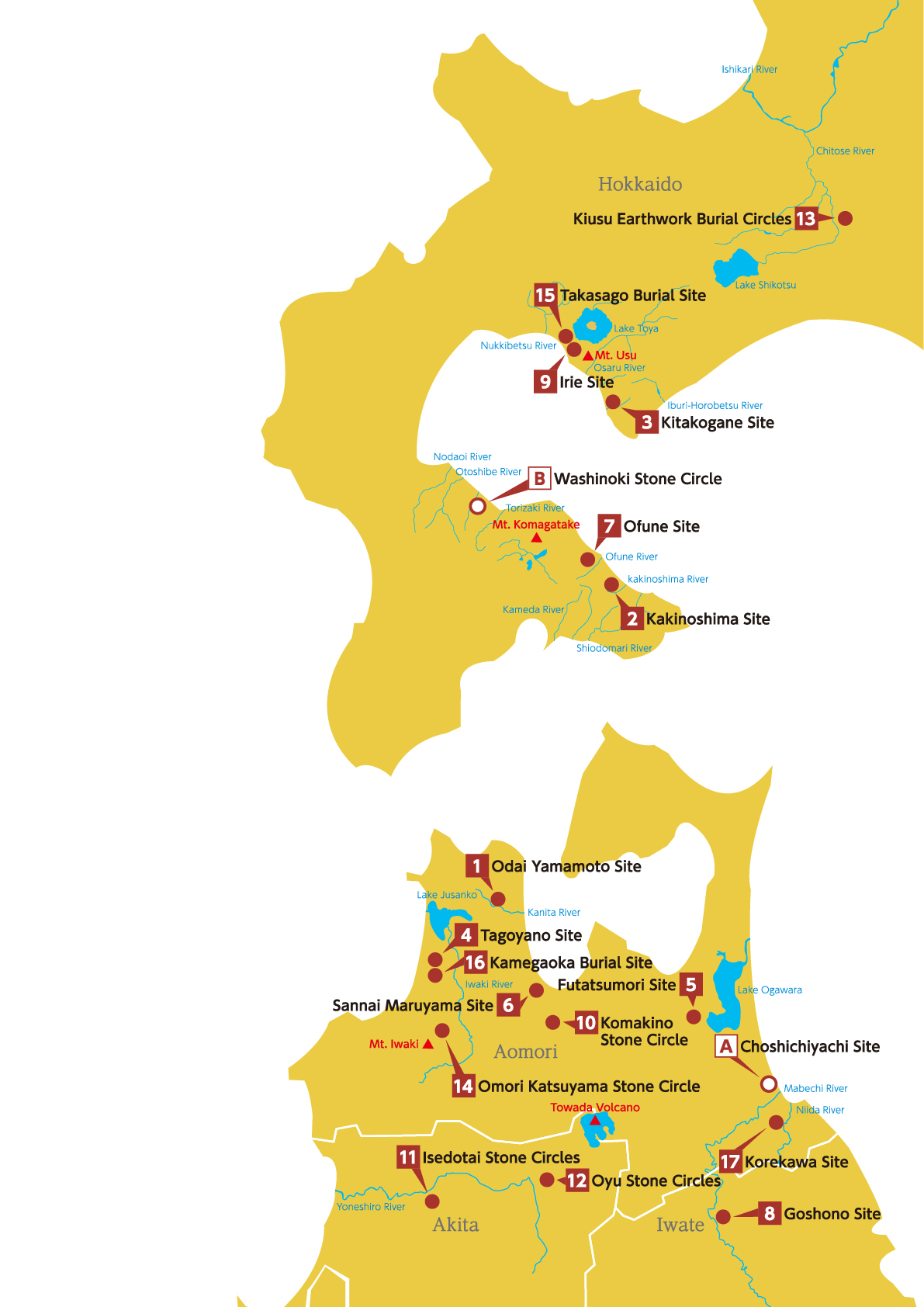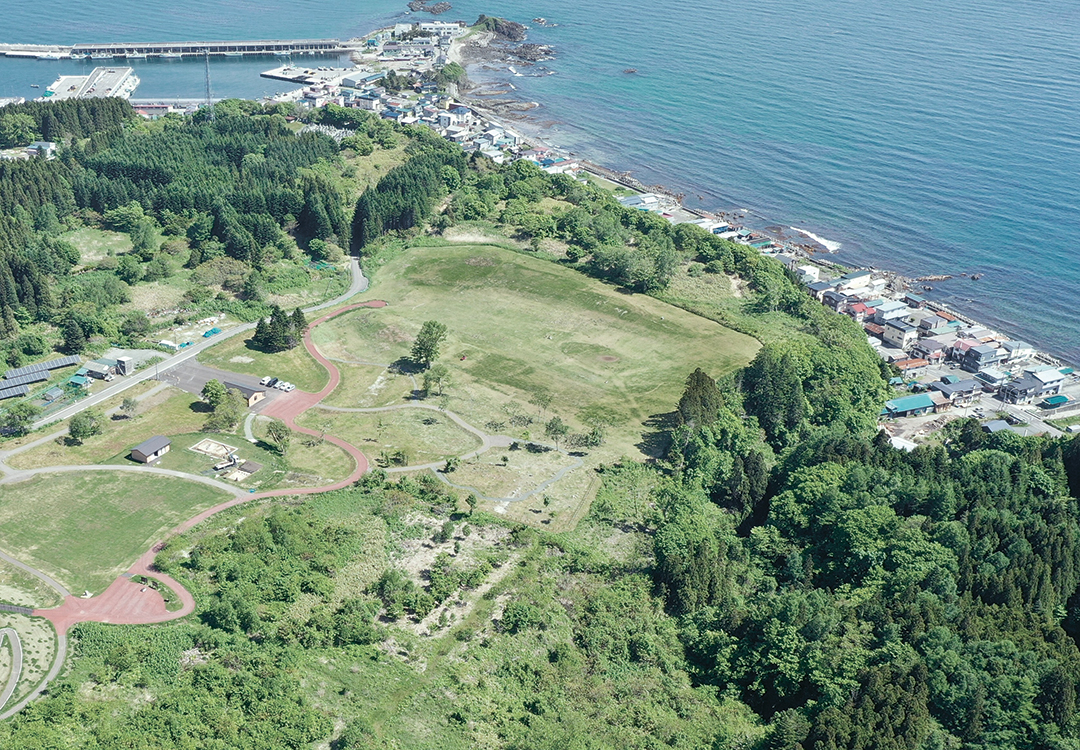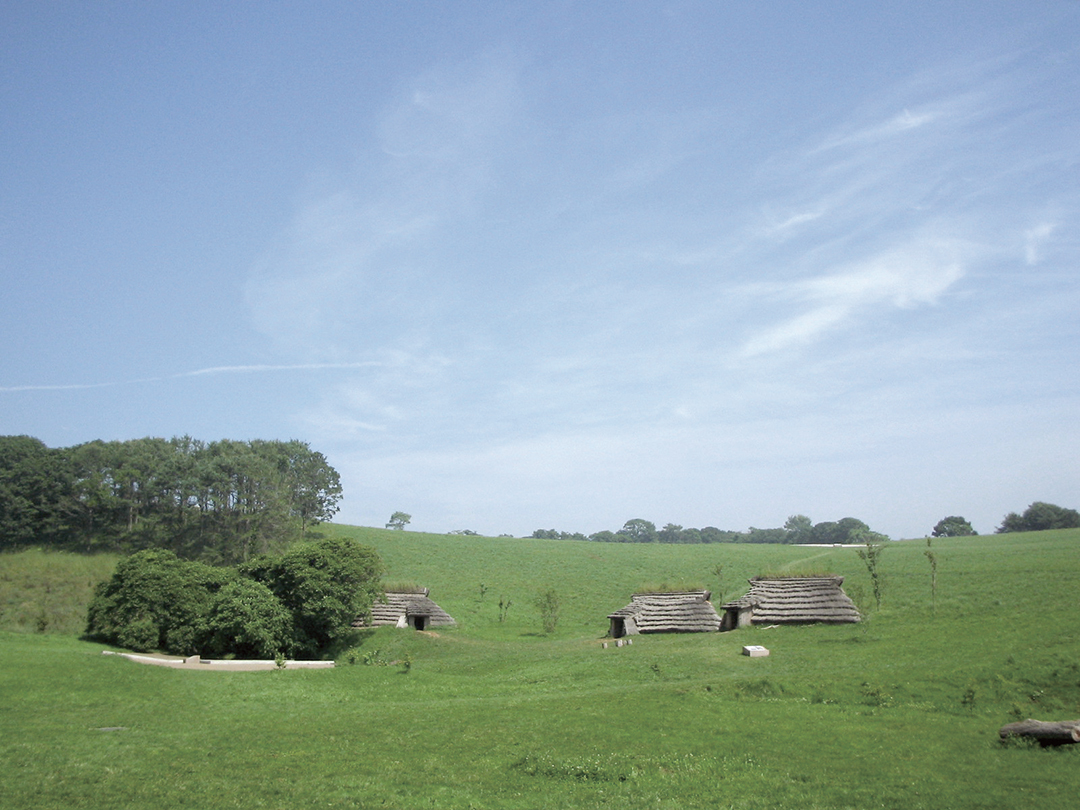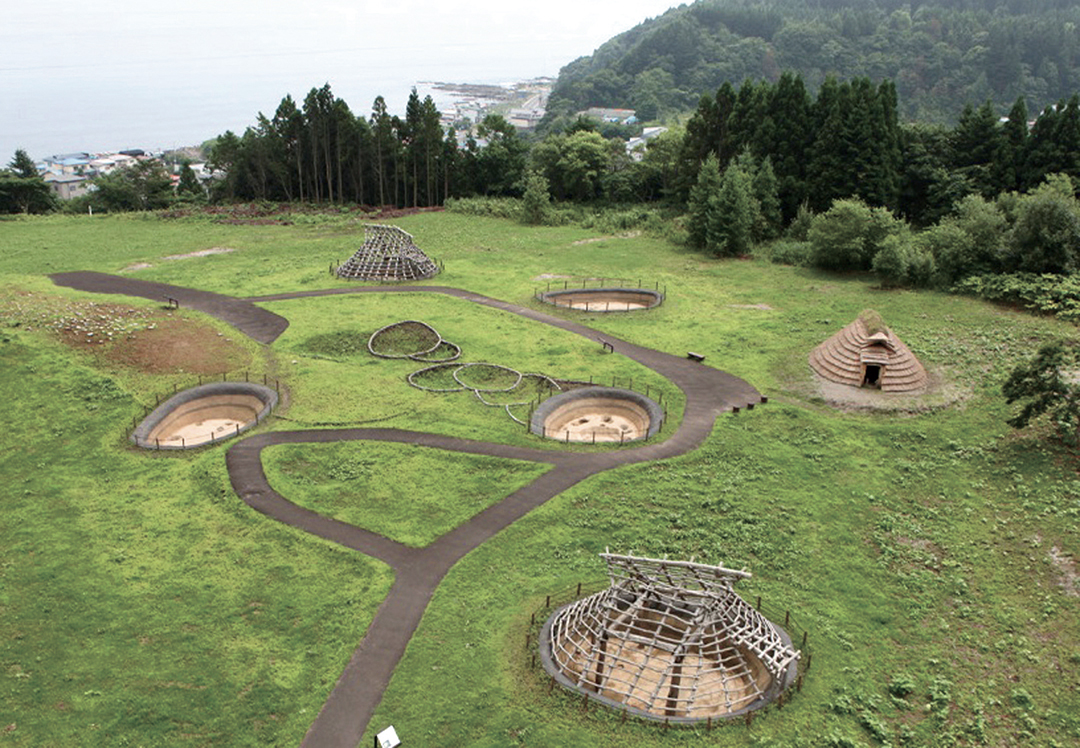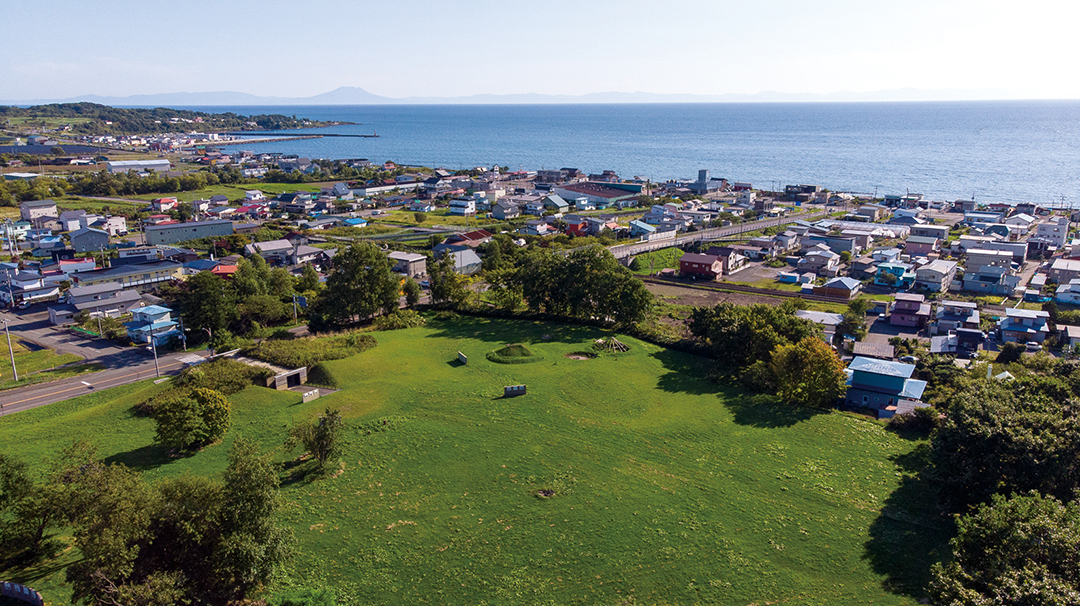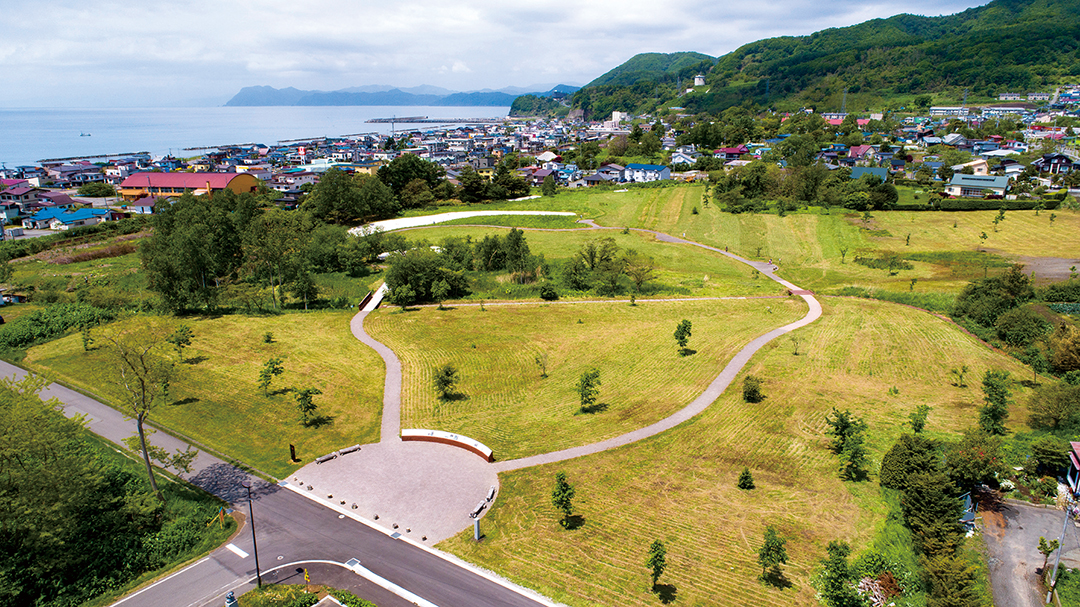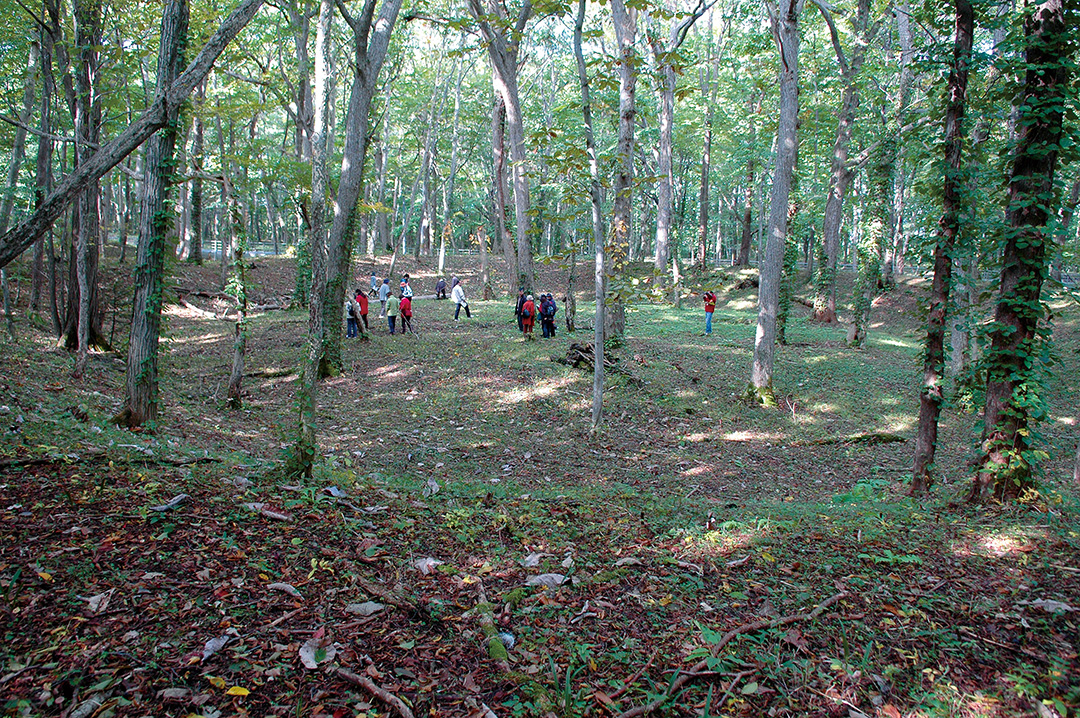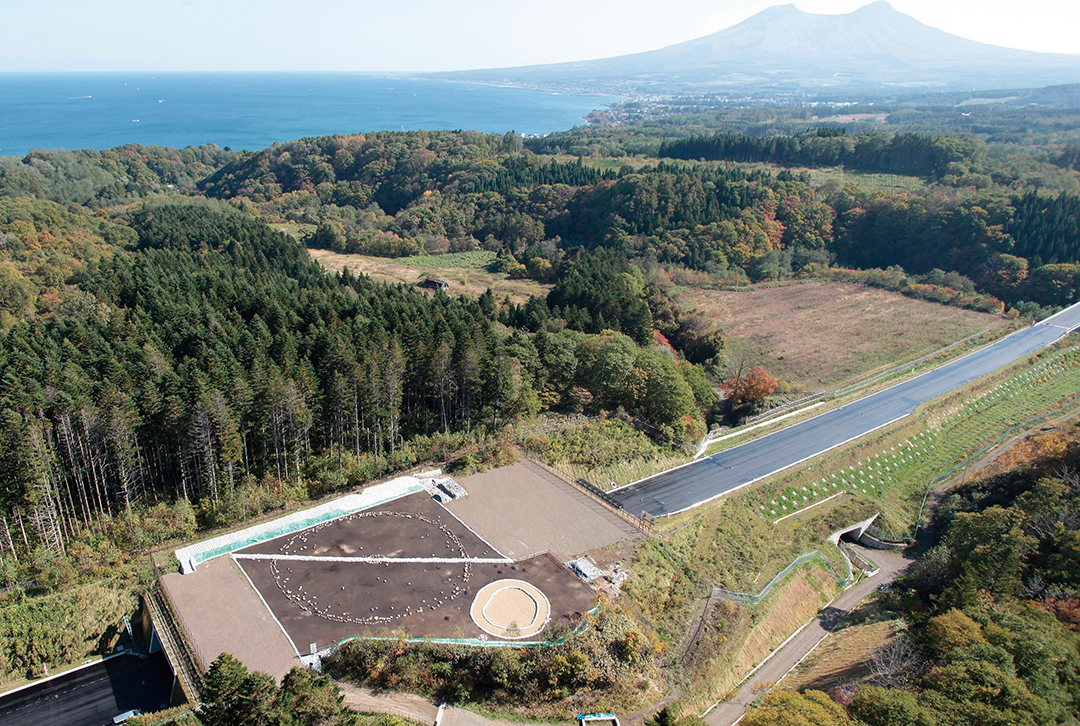
About the Jomon Prehistoric Sites in Northern Japan
On July, 2021, the Jomon Prehistoric Sites in Northern Japan were inscribed on the list as an exceptional testimony to pre-agricultural lifeways and the spiritual culture of prehistoric people. The Jomon Prehistoric Site in Northern Japan consist of 17 archaeological sites: six in Hokkaido, eight in Aomori Prefecture, one in Iwate Prefecture, and two Akita Prefecture. There are two associate sites, one in Hokkaido and the other in Aomori Prefecture, that help promote the public understanding of the Jomon prehistoric sites.

Six Stages of Settlement
the Jomon Prehistoric Sites in Northern Japan the six stages of the “initiation, development, and maturation of settlement” process.

Stage Ⅰ. Emergence of Sedentism
Ⅰa. Settlements emerge.
Ca. 13,000 BCE, Earth’s climate warmed, causing significant changes in the natural environment. Around that time, people started using pottery. The emergence of pottery allowed people to store and cook food, thereby improving their diet by increasing their edible food supplies. The emergence of pottery, which is unsuitable for a mobile lifestyle because of its weight and fragility, is considered an indicator of the inception of sedentism by human beings.

Ⅰb. Settlement facilities are divided.
Ca. 9,000 BCE, deciduous broadleaved forests spread to plains and coastal areas. People started living in pit dwellings in settlements they built in waterfront areas. Before long, an area of pit dwellings would be set apart from the burial area to distinguish between everyday space and special space. The emergence of burial areas is thought to have strengthened the bonds among people living in the settlement and laid the foundation for ancestor worship.
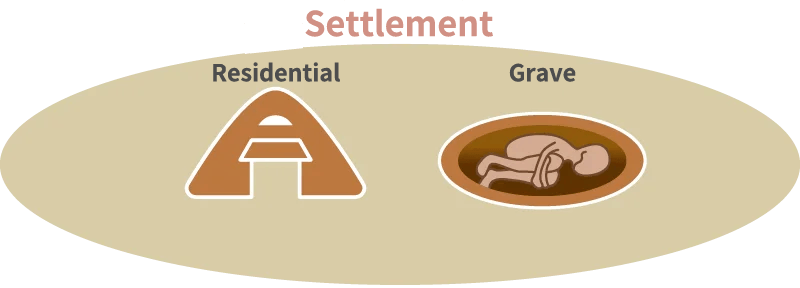
The Jomon Prehistoric Sites in Northern Japan
Components and related assets in Hokkaido
History of Efforts toward Inscription on the World Heritage List
Hokkaido and the northern Tohoku region boast natural splendor and verdure, including in the Shirakami-Sanchi and Shiretoko World Heritage areas.
Blessed with this rich natural environment, our forerunners developed and matured sedentary ways of life based on hunting, fishing, and gathering over a period of more than 10,000 years while nurturing a complex spiritual culture.
Numerous archaeological sites of the Jomon period remain in Hokkaido and northern Tohoku, including the Sannai Maruyama Site (designated a Special National Historic Site) in Aomori City, one of Japan’s largest Jomon period settlement sites, and the Oyu Stone Circles (also a Special National Historic Site) in Kazuno City, which are large-scale monuments.
These serve as important cultural heritage sites that attest to the history and culture of Japan from the Jomon period.
To ensure that these heritage sites will be passed on to the future as a common treasure of humanity, the governments of four prefectures (Hokkaido, Aomori, Iwate, and Akita) and 14 municipalities (Hakodate City, Chitose City, Date City, Mori Town, Toyako Town, Aomori City, Hirosaki City, Hachinohe City, Tsugaru City, Sotogahama Town, Shichinohe Town, Ichinohe Town, Kazuno City, and Kitaakita City) promoted activities toward the inscription of the sites on UNESCO’s World Heritage List.
On July 27, 2021, the Jomon Prehistoric Sites in Northern Japan were inscribed on the list as an exceptional testimony to pre-agricultural lifeways and the spiritual culture of prehistoric people.

The Outstanding Universal Value (OUV) of the Jomon Prehistoric Sites in Northern Japan
The Jomon Prehistoric Sites in Northern Japan consist of 17 archaeological sites that represent the pre-agricultural lifeways and complex spirituality of prehistoric people.
The serial property has Outstanding Universal Value (OUV) as an exceptional testimony to the emergence, development, and maturation of a d\sedentary hunter-fisher-gatherer society that thrived in Northeast Asia from around 13,000 BCE to 400 BCE.
Criteria under which Inscription was Proposed
The UNESCO World Heritage Committee decided to inscribe the serial property on the World Heritage List under the proposed criteria (ⅲ) and (ⅴ) below.
Criterion (ⅲ)
Bear a unique or at least exceptional testimony to a cultural tradition or to a civilization which is living or which as disappeared;
This serial property bears exceptional testimony to a globally rare sedentary hunter-fisher-gatherer society that thrived over a period of more than 10,000 years, and to a complex spiritual culture that was nurtured there, as shown by such archaeological finds as clay tablets with footprints and famous goggle-eyed clay figurines, as well as by structural remains such as graves, dumping grounds, artificial earthen mounds, and stone circles.
Criterion (ⅴ)
Be an outstanding example of a traditional human settlement, land-use, or sea-use which is representative of a culture (or cultures), or human interaction with the environment especially when it has become vulnerable under the impact of irreversible change;
This serial property is an outstanding example of the development of sedentism from emergence to subsequent development to maturity, as well as being an outstanding example of land use.
The property illustrates how people in those days maintained sedentary lifestyles based on hunting, fishing, and gathering by adapting to climate change without altering the land significantly as agrarian societies would have done.
The property specifically illustrates how people selected diverse locations for settlement to secure food stably, such as places near rivers where salmon migrating upstream could be caught, near tidelands where brackish shellfish could be gathered, and near colonies of beech and chestnut trees.
Skills and tools for obtaining food were developed in accordance with specific conditions of different locations.
Integrity and Authenticity
The 17 component parts of the property are of adequate size and carry all the attributes necessary to express the Outstanding Universal Value (OUV) of the property.
Most of the structural remains have been well preserved underground for thousands of years, and authenticity of the component parts is highly maintained in terms of location, from and design, materials and substance, use and function, traditions and techniques, and sprit and feeling.
Thorough Protective Measures
All 17 components parts of the property are designated and protected under the Law for the Protection of Cultural Properties as Historic Sites or Special Historic Sites.
In addition, a buffer zone of appropriate size has been delineated around each component part, in which legal regulatory measures are in place for he proper protection of the property.
The Council for the Preservation and Utilization of World Heritage Jomon Prehistoric Sites promotes the preservation and utilization of the property based on the Comprehensive Preservation and Management Plan, which sets out the basic policies for conserving the OUV f the property in its entirety.
Features Outstanding Universal Value (OUV) of the Jomon Prehistoric Sites in Northern Japan
Attribute 1
Demonstrating a lifestyle characterized by managed use of natural resources
The property demonstrates how prehistoric people in he region led sedentary lives based on hunting, fishing, and gathering over the very long period of more than 10,000 years through the sustainably managed use of natural bounties, including forest and aquatic resources, while adapting to environmental changes such as climate warming and cooling without transitioning to an agrarian society.
Attribute 2
Demonstrating complex spirituality, as evident in rituals and ceremonies
The property demonstrates how prehistoric people in the region developed a complex spiritual culture from the emergent stage of sedentism, as evident in graves, in shell mounds and artificial earthen mounds that were used as ritual and ceremonial sites, in stone circles (i.e., circular stone arrangements), and in excavated artifacts such as clay tablets with footprints and clay figurines.
Attribute 3
Demonstrating diverse relations between settlement locations and livelihoods
The property demonstrates that prehistoric people in the region selected locations for settlements in order to secure food stably, such as places near rivers where salmon migrating upstream could be caught, hilly and other areas that abounded in nut-bearing trees, and inner bay areas and areas near lakes and marshes where fish and shellfish could be caught.
Skills and tools for obtaining food were developed in accordance with the specific conditions of the different locations.
Attribute 4
Demonstrating the transition of the form of settlements
The property demonstrates that prehistoric people in this region, who began loving sedentarily ca. 13,000 BCE, changed their settlement patterns to adapt to environmental changes such as climate warming and cooling without altering the land significantly as agrarian societies would have done.
Comparative prehistoric properties around the world
In order to be inscribed on the World Heritage List, it must be proven that there are no other similar heritage sites.
Comparative studies of Jomon archaeological sites in Hokkaido and the northern Tohoku region with similar prehistoric properties around the world have shown that none of them possess all four of the above characteristics. This comparative research proved that the Jomon sites are representative examples of how humans lived for long periods of time in Northeast Asia before the start of agriculture, leading to their inscription on the World Heritage List.

